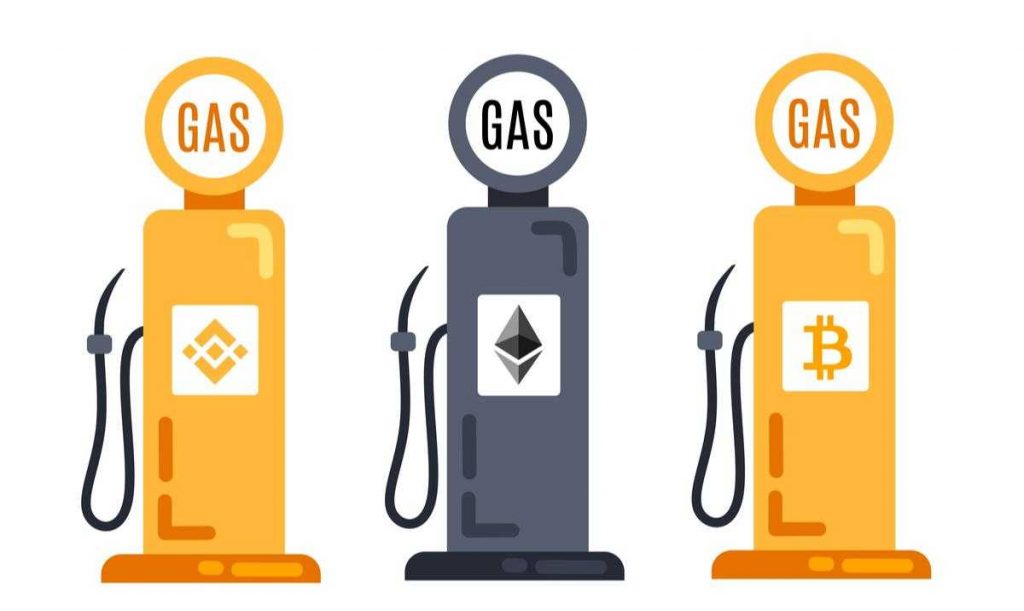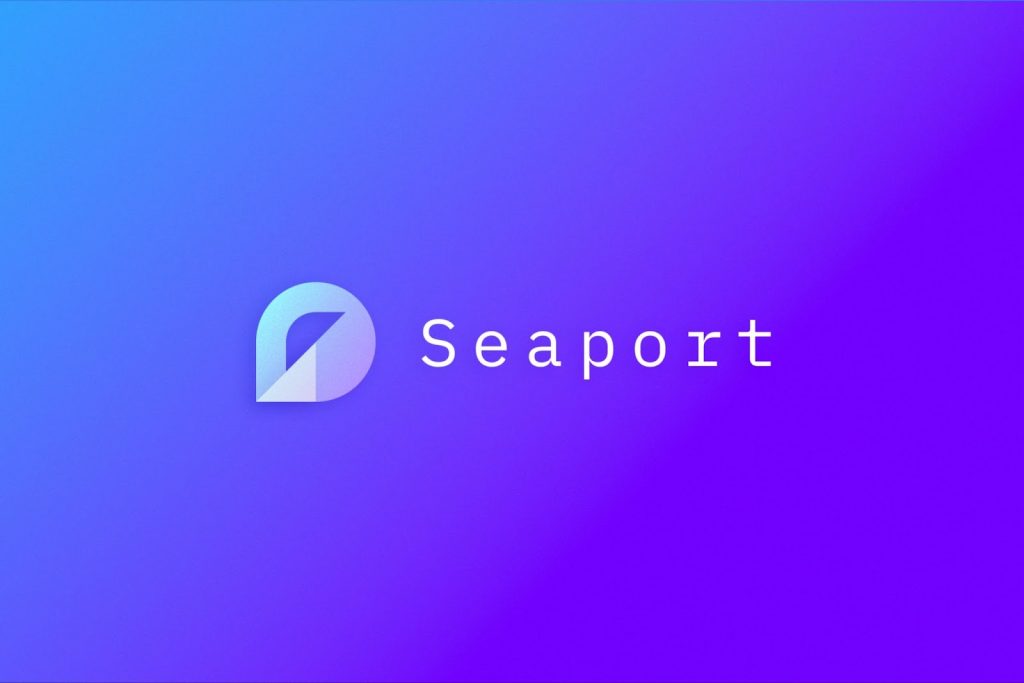Were you recently forced to pay an OpenSea gas fee to execute a transaction? If so, you might have wondered what such a fee actually entails. All blockchain transactions – including actions conducted on platforms like OpenSea – require computational power. Network validators supply this power, and it’s not free of charge. This is where gas fees enter the equation, as this is how value transfers from users to validators. But what exactly is a gas fee, and how do they work on OpenSea?
To adequately answer the question above, we will kickstart this article by diving into the ins and outs of blockchain gas fees in general. From there, we will look closer at what a gas fee is in the context of OpenSea. Next, the article further explores gas fees and how to calculate them. To top things off, we will additionally take a closer look at how you can avoid gas fees on OpenSea!
If you have further interest in OpenSea and NFTs and want to create your own non-fungible token (NFT) projects, Moralis is your go-to option. OpenSea offers an API that can be helpful; however, obtaining your own OpenSea API key is notoriously difficult. This poses significant blockages for developers, which is why you should consider the Moralis NFT API as an alternative.

With tools like the enterprise-grade NFT API from Moralis, you can effortlessly build Web3 platforms in a heartbeat and seamlessly access on-chain NFT data. Moreover, did you know you can sign up for free with Moralis? Create your account now and start leveraging the full power of Web3 technology today!
Without further ado, let’s dive into this article’s topic and start by answering the ”what are gas fees?” question!
What are Gas Fees?
To understand what an OpenSea gas fee is, we need to start with the fundamentals. Therefore, let us kickstart this tutorial by diving into the intricacies of gas fees in general.

All blockchain activity performed directly on a network – from purchasing non-fungible tokens (NFTs) to executing smart contracts – requires computational power. A distributed set of individuals called “network validators” supply this computational power. Each validator purchase, operate and maintain their own equipment to ensure the accuracy and security of a blockchain network.
Gas fees are essential in these ecosystems as this is how we transfer value from those using a network’s service to those supplying the computing power to execute transactions. In addition, gas fees incentivize validators to process transactions accurately and uphold the security of a network, as they receive a cut of the fee as payment for their work.
Let us look at the Ethereum ecosystem as an example to better understand how this works. On the Ethereum blockchain, ”gas” refers to the unit that measures computational efforts of executing certain operations.
Gas fees are paid in the Ethereum network’s native currency: ether (ETH). Gas prices are presented in a unit of measurement referred to as ”gwei” – a denomination of ETH. One gwei is equal to 0.000000001 ETH. If you want to learn more about gwei, check out our article on how to convert gwei to ETH.
Now that you know the fundamental principles of gas fees, let us take a closer look at what a gas fee is on OpenSea!
Gas Fees on OpenSea
As you learned in the previous section, all blockchain-related transactions are subject to gas fees. This applies whenever data is stored or changed on a network, which occurs when tokens are transferred, NFTs are sold, purchased, minted, etc. It does not matter if you interact with a blockchain network through a platform like OpenSea; you must still deal with the associated fees.

When it comes to OpenSea gas fees, it is essential to know that the platform does not profit from them. What’s more, OpenSea additionally lacks control of gas prices and is unable to refund any of the fees.
So, when do you need to pay gas fees on OpenSea? As OpenSea is an NFT marketplace, you can leverage the platform to, for instance, transfer and purchase NFTs. To perform these actions, blockchain transactions are needed and, therefore, demand gas fees. Thus, if you are transferring or purchasing an NFT on OpenSea, you must have sufficient cryptocurrency in your wallet to cover these costs.
There are two categories of user actions that incur ETH gas fees on the OpenSea platform:
- Recurring fees
- One-time fees
To understand what a gas fee on OpenSea is, let us break down these two categories in separate sub-headings below!
Recurring Gas Fees on OpenSea
There are a few instances in which you need to pay recurring gas fees on OpenSea, and here are some prominent examples:
- Transferring an NFT to someone
- Buying an NFT
- Canceling a bid
- Accepting an offer
- Canceling an NFT listing
One-Time Gas Fees on OpenSea
When you start with NFTs and OpenSea, you need to consider a few one-time fees. These are transactions needed to grant permission to your wallet to, for instance, interact with the Seaport protocol. Seaport is a Web3 marketplace protocol for efficiently and safely buying and selling NFTs.

Here are three prominent examples of one-time OpenSea gas fees:
- Approval Fee – If you list an item on OpenSea that was not created using the platform’s native tools but rather through a custom NFT contract, you must pay a one-time approval fee. This fee enables transactions between your wallet and that particular NFT smart contact.
- WETH Fee – If it is your first time listing an item for auction, you must also approve ”WETH”. This is a certain type of ETH explicitly for auctions.
- Token Approval – The last example is token approval. You need this when you want to interact with a cryptocurrency for the first time. This is a required one-time fee for each contract or token.
Gas-Free OpenSea Actions
Along with actions that require recurring and one-time gas fees, OpenSea features a few that are free of gas. Here are five prominent examples:
- Using OpenSea’s native lazy minting tool for creating an NFT
- Listing an NFT at a fixed price
- Listing an NFT for auction
- Creating collections
- Reducing the price of an NFT listing
Also, if you want to learn more about this, check out our guide on gasless NFT listing OpenSea. That article explains how you can list an NFT on OpenSea without having to pay a gas fee!
How are Gas Fees Calculated?
With a more profound understanding of gas fees and what they entail in an OpenSea context, you might be asking yourself, ”how do I calculate gas fees?”. If you want the answer to this question, join us in this section as we explain just that!
There are several factors determining the gas fee on, for instance, OpenSea. This includes supply, demand, and network capacity at the given time of a transaction. However, the method for calculating a gas fee varies depending on the blockchain network. So, to understand how we calculate gas fees, let us use Ethereum as an example.

Calculating gas fees on Ethereum used to be a relatively bothersome endeavor. Fortunately, with the implementation of Ethereum Improvement Proposal (EIP) 1559, it became considerably simplified.
With EIP-1559, users now pay a base fee for each unit of gas, which Ethereum burns when a transaction finalizes. In addition, users can pay a priority fee per unit of gas. The value of the priority fee influences how quickly they want the transaction to be processed. Here is the equation for calculating the total gas fee on Ethereum:
Total gas fee = units of gas used * (base fee + priority fee)
Example: 250,000 (gwei) = 21,000 * (10 + 2)
Using the numbers in the example above, if a user wants to send 1 ETH, the system deducts 1.000252 ETH from that person’s account. 1 ETH is sent to the recipient; meanwhile, the validator receives the priority fee, and the base fee is burned.
Nevertheless, to better understand this, let us look at some factors determining this price calculation, starting with block size!
Block Size
Before EIP-1559 – also known as the London Upgrade – Ethereum blocks had a fixed size. During times of peak demand, these blocks operated at maximum capacity. Consequently, users often had to wait for lower demand before getting included in a block. This resulted in a poor user experience.
With the London Upgrade, Ethereum introduced variable-size blocks. All blocks have a target size of 15 million gas, but the actual size can vary depending on the network’s demand. The maximum limit is 30 million.
To achieve an average block size equal to 15 million gas, Ethereum uses a process called ”tâtonnement”. This means that if the size of a block exceeds the target, the base fee increases in the following block. Similarly, if the size is less than the target, the fee decreases for the next block.
Base Fee
All Ethereum blocks have a base fee that acts as a reserve price. To be included in a block, the offer price per gas must, at minimum, equal the base fee. This fee is calculated independently of the current block and is determined by the blocks before. As a result, transaction fees become more predictable for users. When someone mines the block, the system burns and removes the base fee from circulation.
Max Fee
When executing transactions on the Ethereum network, users have the option to specify a maximum limit. This determines the max amount that the user is willing to pay for the transaction to be executed. This parameter is called maxFeePerGas and must exceed the sum of the base fee and tip for the transaction to finalize successfully.
Priority Fee
As Ethereum burns the base fee when processing a transaction, the London Upgrade introduces a priority fee that incentivizes validators to include transactions in a block. Without this fee, validators would find it economically beneficial to validate empty blocks, as the reward would be the same.
Now, with a better understanding of how to calculate gas fees on Ethereum and the factors influencing the price, let us look closer at how you can avoid or minimize gas fees on OpenSea!
How to Avoid Gas Fees on OpenSea
Since OpenSea, for instance, leverages the Ethereum network, gas fees work similarly on this platform. The buyers pay fees when purchasing fixed-price items, while sellers pay the gas fee when accepting offers. But, like the price of altcoins, gas prices vary depending on supply and demand. Consequently, it can be highly beneficial to identify demand fluctuations and time purchases accordingly.
So, how can you avoid high gas fees on OpenSea?

First, the base gas fee on Ethereum mainly influences OpenSea gas fees. This, in turn, is affected by multiple network and price factors. For instance, Ethereum’s base fee increases because of the number of users interacting with the network.
For this reason, it can be highly beneficial to identify periods when Ethereum’s network activity is lower and time this with your NFT transactions.
You can also use different software for free that can aid in identifying when gas prices are relatively high or low before completing a transaction. These tools will help you determine the best time to perform transactions and identify congestion and high OpenSea gas fees. It is also worth noting that OpenSea transactions use gas fees even if they fail. Most wallets have a default gas limit setting that calculates automatically, and altering these can increase the chance of transactions failing. As such, it can be good to avoid setting a low gas limit and instead trust the default settings of a wallet.
Lastly, a final solution might be to use layer-2 (L2) scaling platforms to transact on OpenSea instead. A good example is Polygon, which boasts lower transaction fees than Ethereum.
If you want to know more about minimizing fees, check out our article on how to reduce Solidity gas costs.
Summary – OpenSea Gas Fee
In this article, we explored the intricacies of OpenSea gas fees. In doing so, we initially dove into the details of gas fees in general and learned why they are important. From there, we took a closer look at OpenSea gas fees, where we found out that there are two categories:
- Recurring gas fees
- One-time gas fees
From there, we saw the calculation of an OpenSea gas fee. In doing so, you learned that supply, demand, and network activity influence gas fees. We also explore important gas fee components, such as base fees, priority fees, max limit, etc.
To top things off, we provided three examples of how you can avoid OpenSea gas fees:
- Timing transactions when network activity is low
- Not setting a too-low gas limit
- Leveraging L2 scaling solutions
If you liked this article, you should also check out other guides on the Moralis Web3 blog. For example, learn what an xNFT is or take a closer look at the best Alchemy NFT API alternative!
Also, if you are serious about becoming a blockchain developer and even building your own NFT marketplace, remember to sign up with Moralis now. You can create your free account and start leveraging the power of Web3 in a matter of moments!
